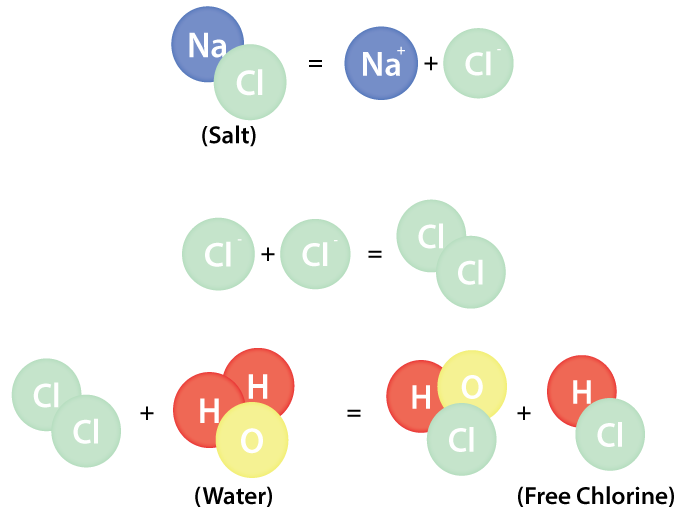Bubble Covers and Automatic Dosing Salt Pools
Why do pools need chlorine?
Chlorine is commonly used for sanitising pool water in both domestic and commercial swimming pools. It is a powerful oxidising agent which means it readily reacts with pool contaminants, working to destroy algae and other waterborne pathogens that can otherwise make us ill. Chlorine is quickly consumed as it does this job, so needs to be topped up regularly.
Written by:
Salt pools and automatic dosing
Over the last 10 years, salt water automatic systems have grown in popularity. These systems use salt (sodium chloride) as the source of chlorine and automate the regular and controlled dosing of chlorine into a pool to ensure safe water chemistry is maintained. They work by holding 2000ppm of sodium chloride in solution within pool water which is converted through electrolysis to harmless sodium and sanitising chloride ions which combine with the water to produce hypochlorous acid (often referred to as free chlorine). The dosing rate is determined by the size of the pool being serviced and the average bathing load. Automatic saltwater systems are popular as once installed they are cheap to run and ensure a safe swim through steady addition sanitising chlorine without the requirement for frequent manual additions.

Bubble covers and automatic saltwater systems
Automatic saltwater systems will typically dispense a set quantity of salt at a given time interval to maintain a safe chlorine level in the pool, regardless of the current chlorine concentration in the water. It is therefore important that the dosing regimen is properly specified and optimised to avoid under or over chlorination of pool water.
One factor to consider is how often the pool will be covered, as using a pool cover will reduce the rate at which chlorine is depleted by around 50%. Covering a pool prevents UV light and biological contaminants from entering the pool, as well as preventing the evaporation and gas release from the water surface. A covered pool with an automatic salt chlorination system can therefore quickly become over chlorinated if the dosing regimen is not corrected accordingly. Over chlorinated water can not only cause an uncomfortable swim but may also permanently damage pool installations and surrounding equipment – such as PVC/ fibreglass pool linings, ABS fixtures and covers.
Overchlorinated bubble covers
Bubble covers are typically manufactured from polyethylene (PE) which is not negatively affected by salt water and it is for this reason that products manufactured from PE are commonly used in marine environments, they are not however impervious to chemical attack from excessive chlorine concentration.
Pools covers which have been in contact with overchlorinated pool water will quickly become brittle and discoloured or bleached. This is because although chlorine is excellent at oxidising and destroying pathogens in water to keep a pool safe, when in high enough concentration it will also begin to oxidise plastic materials and pigments, breaking them down and causing permanent damage.
Avoiding over chlorination when covering an automatic dosing pool is quick and easy – simply lower the dosage rate to account for the reduction in chlorine requirement. After first installing a cover closely monitor the chlorine level of a pool until you are confident that the chlorine dosing regimen is correct. If you find that chlorine levels are consistently above 4ppm (4mg per L) it is important to immediately remove the cover to avoid permanent damage and wait for chlorine levels to drop to appropriate levels before re-covering. Common signs that your automatic saltwater pool are overchlorinated include pitting or tarnishing of metal eyelets in your cover, as well as discolouration of any materials which have been in repeated contact with pool water, such as the bubbles, hemming or pool liner.
For more information about how to maximise the longevity of your bubble cover be sure to check out our use and care guide.













